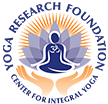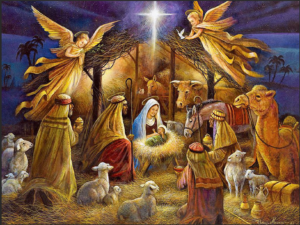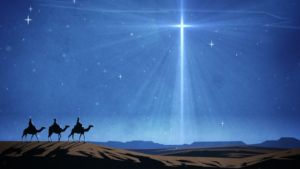Introduction
Historicity is not the important and basic feature of any religious scripture such as the Bible, the Ramayana, or the Srimad Bhagavatam. Rather, one must look into the symbolic meaning of historical accounts to find the true meaning of a particular religion. Therefore, it is not necessary to establish the authenticity of the birth of Christ, Buddha, Rama or Krishna, or to accept or reject their miraculous deeds. Christ, when viewed as symbolic of the spiritual consciousness in man, exists. He existed in the past, and will continue to exist in the future, because He is the reality transcending the limitations of the human mind.
Philosophically speaking, every human being and his life on earth has a universal meaning, and therefore, can be understood on a more profound, and symbolic level. While the profundity and glory of universal life is less perceptible in the majority of people, it is like the blazing sun in the lives of Christ and Buddha, Sri Krishna and Sri Rama. Therefore, one can clearly see the universe reflected in the life of Christ. The sufferings of the limited soul, its aspiration for attaining God realization, the stairways of spiritual evolution through which the human consciousness must ascend, the obstructions that it must face and surmount, the glorious vistas of transcendent consciousness that it must encounter on its march towards God, the transformation that it must undergo, the bliss and peace that it must realize, these are all reflected in the life and teachings of Christ, as well as in all great personalities and religious figures who are adored in different religions.
Differences among religions are apparent and not intrinsic. Conflicts exist because one is unable to properly understand the implied meaning present in religious writings. Unfortunately the majority of priests and religious teachers do not encourage a deeper understanding of the religious texts. Their energies are instead involved in asserting the superiority of their religion over others. Thus, Divine Love, which ought to open the heart of man to the perception of universal unity, is thwarted; moreover, a vague, superstitious, and biased faith emerges in its place, which is the bane of every religion.
In this brief article, I will present the mysticism implied in the birth of Christ, in the light of the mystic philosophy of Yoga and Vedanta.
The Genealogy of Jesus
In the prelude of the Holy Gospel of Jesus Christ according to Saint Matthew, Jesus is said to be “the son of David, the son of Abraham.” Following in the genealogy is an enumeration of the generations from Abraham to David and from David to Joseph, the father of Jesus.
It is noteworthy that this portion of the New Testament refers to Jesus as the son of David and Abraham, and not the son of Adam. The “son of Adam” would imply a general human being, one who has not undergone the necessary spiritual transformation to commune with God or to establish a relationship with the Divinity. Abraham is a transformed son of Adam – a transformed human being. His personality illustrates the spiritual potency in men. While an ordinary person is naturally related to Adam, the limited spirit struggling through the maze of desires, a transformed personality establishes his relation to God, the Divine Self. Such a relationship is intrinsic to man. The Kingdom of Heaven is within every human being.
In Abraham, the spiritual glory is of a more subjective, mental, and abstract nature, while in David, the spiritual glory also embraces the objective world. David symbolizes a process of inner transformation, as well as an outer expression in the form of his royal elegance. Abraham and David therefore serve as two symbolic milestones on the way to the development of Jesus the Christ.
The Christ
Christ symbolizes spirituality in its fullest bloom. He contains in him the potentiality and the subjectivity of Abraham, as well as the creative expression in the glory of David. Since in his personality these two factors a compounded, Christ transcends them both. His religious movement is best expressed through the Cross.
The Cross
The horizontal line of the cross refers to the expressions of life in the physical, material, and vital planes. The vertical line refers to the movement through the mind and intellect towards transcendental intuition, where in the human soul communes with God. These two movements are at once and immediate in Jesus. Christians therefore see in Jesus the fulfillment of the prophecies of the past.
The life of Jesus is a vital commentary on the concept of the Cross, and is therefore an exemplification of a true religious process. The mention of fourteen generations from Abraham to David and twenty eight between David and Jesus are suggestive of various spiritual stages in the life of an aspirant.
The Virgin Mary
Saint Matthew relates that Mary, who is betrothed to Joseph, was found with a child of the Holy Spirit. The narrative relates that an angel informed Joseph that Mary was to bring forth the Son of God name Jesus. Saint Matthew quotes from Isaiah 7.14: “Behold the virgin shall be with child, and shall bring forth a son, and they shall call his name Immanuel (God with us)” and points out to the fulfillment of this prophecy in the birth of Jesus.
Jesus is symbolic of the individual soul which has attained simplicity and purity. Prior to such purification, the soul is wedded to the mind that is filled with worldly impressions. The struggling souls of the world are wedded to such a mind. Therefore, their progeny is in the form of worldly values, desires, cravings, attachments, birth, and death.
Joseph however, was wedded to Mary who symbolizes the intuitive mind. While for the worldly mind there are many realities to which it must be wedded, for the intuitive mind, there is only one reality. The virginity of Mary is symbolic of her intrinsic purity. The intuitive mind does not perceive duality or differences in the homogeneous existence of the Absolute. It is the perception of duality which taints the spirit of man.
The Birth of Christ
In the mystic significance of the story of Christ’s birth, Joseph symbolizes the individual soul, Mary represents the intuitive mind, and Christ symbolizes spiritual aspiration. The individual soul in its process of evolution, comes in conjunction with the intuitive mind. Thus, spiritual aspiration is born. All worldly values are born through the ego and lower mind; in the birth of spiritual aspiration however, the ego is transcended. The Divine plan in life brings forth the child of aspiration through the virgin – the higher, or intuitive mind.
Initially, Joseph was ashamed to reveal that Mary was with child. But when the Angel (Divine insight) informed him of the implications of Mary’s conception, he was overjoyed. Such as the matter in which the ego of man comes to recognize a spiritual process that must transcend and efface it – the mystic process of the birth of Christ, his growth, and final attainment.
The Divine Birth in Man
Prophecies are symbolic of the divine possibilities in human consciousness. They are not fulfilled in the terms of a historical development, but rather in the form of spiritual revelation and Divine realization.
From this point of you, the Divine Birth in man has been prophesies in all religions of the world. But this birth necessitates the recovery of the pure state of the mind and transcendence of egoistic values. It is the revelation of what already exists as the reality. Such revelation brings about a spiritual transformation in one’s consciousness and invokes a series of mystic developments in order to lead the soul from the realms of limitations and relativity to the realm of Eternity and transcendence.
Isaiah’s Prophecy
Isaiah meant that the Virgin Mind would be revealed in the process of spiritual revelation. Such a mind will commune with the Supreme Divinity. This will follow the manifestation of God in the consciousness of men in the form of spiritual aspiration. This Divine Son is called Immanuel (God with us), because he points to the transcendent glory of the Self. Spiritual aspiration is in itself a glimpse of the essential Divinity within; and the blossoming of such an aspiration implies a complete realization of the Divinity. Thus the Divine Son leads one to the Heavenly Father – aspiration leads one to liberation.
Also in the Prophecy of Isaiah it says “Butter and honey shall he eat, when he knoweth to refuse the evil and choose the good.” The Divine Incarnation – the God within us – will feed upon butter and honey, and will be endowed with a discerning vision that differentiates good from evil. Butter is symbolic of Divine Grace and compassion, and honey of spiritual bliss. The Hindu mystics portrayed the divine incarnation of Krishna as a stealer of butter and honey, even as a child. Though the Biblical language has adopted various Hindu symbols, the meaning of such symbols can sometimes be difficult to find in the text of the Bible. However, one may find them profusely in the Hindu scriptures.
Symbolism of the Birth of Jesus
Jesus was born in Bethlehem in Judea during the reign of King Herod. Herod was afraid that the old prophecy might be fulfilled in Jesus – that Jesus might usurp his kingdom and power. Therefore, he sent three wise men from the east to go to Jerusalem to identify the child. Guided by the star, upon arriving in Bethlehem they worshiped Jesus and offered gifts of gold, frankincense, and myrrh. However, they did not return to Herod since they understood his intention, and instead departed for their own country.
Saint Luke gives further details with reference to the circumstances of the birth of Jesus Christ. According to the orders of Cesar Augustus, all people were ordered to enroll themselves. Joseph and Mary went “from Galilee, out of the city of Nazareth, into Judea, to the city of David, which is called Bethlehem, because he was on the house and family of David.” Christ was born in a manger because there was no room in the inn.
The story of Christ birth has profound mystic significance. King Herod represents the impure ego which is frightened to lose its power at the emergence of Divine aspiration – Jesus Christ. It tries its utmost to destroy such aspiration due to fear of losing its attachments, relations, and values.
Bethlehem – the city of David – is symbolic of the purified heart of man wherein Christ is born. The inn represents an externalized mind with diverse thoughts of sense objects that come and go. Desires, sentiments, worldly expectations, and ambitions all abound at the inn. On the other hand, the manger symbolizes the internalized mind where in the thought waves are withdrawn. There is serenity and simplicity. The Divine birth in man is softer than the opening of a rose in the hours of the night, and yet, its implications are louder than thundering clouds.
The three wise men are symbolic of the three modes of nature (gunas of Prakriti – sattwa or purity, rajas or activity, and tamas or inertia). Their gifts represent the sublime functions of these three modes of nature. When desires and subconscious complexes imprison the spirit in man, Nature cannot offer its bounteous wealth. Therefore, Nature, instead of giving gifts, robs people of their vitality, intelligence, and power. But in the case of Christ, Nature is well pleased.
The gift of gold is symbolic of spiritual purity, frankincense symbolizes divine expansion and expressions of virtue like a heavenly aroma. Myrrh represents a gum-like substance which is symbolic of tamas, or inertia. Although the operation of tamas is negative in most people, in an illumined personality it becomes the sustainer of serenity and peace in the mind. Myrrh in Jesus represent the unceasing flow of Divine Love and spiritual peace.
The Guiding Star represents the voice of purified conscience. The three sages do not return to the King. The course of Nature, which was inclined to Herod, now detaches itself from him and offers its gifts to Jesus. In other words there is a process of transformation of energy. Impure ego is gradually deprived of Nature’s gifts, and spiritual aspiration becomes the focus of life’s movement to God.
With the understanding of the mystic symbolism implied in Christ’s birth, an aspirant should not look forward for Saviors to come in a distant future, but he should create the circumstances of the Divine Birth within himself. When spiritual aspiration is born through purity of nature and integration of personality, it will gradually unravel the infinite beauty that is hidden in one’s soul. It will lead to the crucifixion where an ego is transcended and reason transmutes itself into intuition. The movement towards the realization of the Cosmic Self – the Kingdom of Heaven – even within one’s heart is the message of Christ’s birth.
It is through prayer, meditation, and selfless activities that one worships Christ, invokes him within his own being, and finally takes up his cross to transcend the ego and realize union with the Supreme Self. May your lives be filled with the joy and love of the Divine Jesus.



